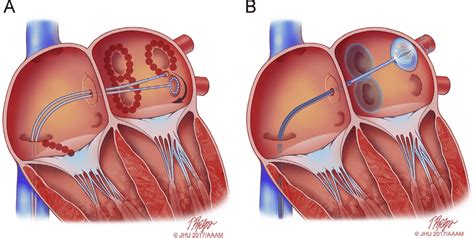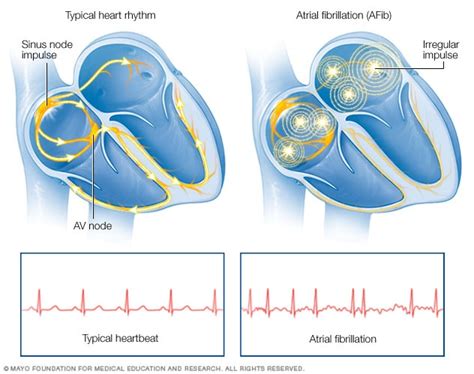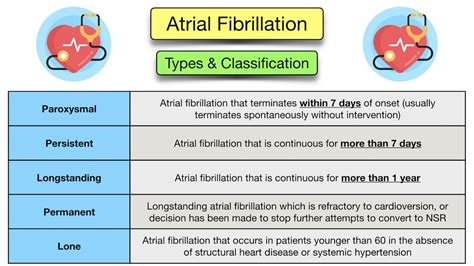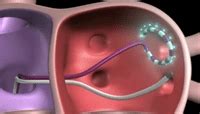Intro
Learn about Atrial Fibrillation Ablation Treatment, a minimally invasive procedure using catheter ablation to restore heart rhythm, reducing arrhythmia and stroke risk, with benefits of cardioversion and electrophysiology.
Atrial fibrillation, commonly referred to as AFib, is a type of irregular heartbeat that can significantly impact an individual's quality of life. It occurs when the upper chambers of the heart, known as the atria, beat too quickly and irregularly, preventing the heart from pumping blood effectively. This condition can lead to symptoms such as palpitations, shortness of breath, and fatigue. In severe cases, atrial fibrillation can increase the risk of stroke, heart failure, and other heart-related complications. Fortunately, various treatment options are available to manage AFib, with atrial fibrillation ablation being a highly effective procedure for many patients.
The importance of addressing atrial fibrillation cannot be overstated. As the most common type of serious arrhythmia, AFib affects millions of people worldwide, with its prevalence expected to increase due to the aging population and rising incidence of heart disease. Traditional treatment approaches, such as medication and cardioversion, may provide temporary relief but often fail to address the underlying causes of the condition. Atrial fibrillation ablation, on the other hand, offers a more permanent solution by targeting and eliminating the abnormal electrical pathways in the heart that trigger AFib.
For individuals suffering from atrial fibrillation, understanding the available treatment options is crucial. Atrial fibrillation ablation has emerged as a popular choice due to its high success rate and minimal invasive nature. This procedure involves using energy to destroy the abnormal electrical pathways in the heart, restoring a regular heartbeat. The decision to undergo ablation should be made after careful consultation with a healthcare provider, considering factors such as the severity of symptoms, overall health, and the presence of any underlying conditions. By exploring the benefits, risks, and mechanisms of atrial fibrillation ablation, patients can make informed decisions about their treatment and take the first step towards regaining control over their heart health.
Atrial Fibrillation Ablation Procedure

Atrial fibrillation ablation is typically performed in an electrophysiology laboratory under local anesthesia and sedation. The procedure involves the insertion of catheters through a vein in the leg, which are then guided to the heart using X-ray and other imaging technologies. Once in position, the catheters deliver energy to the targeted areas, either in the form of heat (radiofrequency ablation) or extreme cold (cryoablation). This energy destroys the abnormal electrical pathways, preventing them from triggering atrial fibrillation. The procedure can take several hours to complete, and patients are usually required to stay overnight in the hospital for observation.
Types of Ablation Energy
The choice of ablation energy depends on various factors, including the location and size of the targeted area, as well as the patient's overall health. Radiofrequency ablation is the most commonly used method, as it provides precise control over the amount of energy delivered. Cryoablation, on the other hand, is often preferred for its ability to minimize damage to surrounding tissues. Other types of energy, such as laser and microwave, are also being explored for their potential in treating atrial fibrillation.Benefits of Atrial Fibrillation Ablation

Atrial fibrillation ablation offers numerous benefits for patients suffering from AFib. These include:
- Significant reduction in symptoms: By eliminating the abnormal electrical pathways, ablation can greatly reduce the frequency and severity of AFib episodes.
- Improved quality of life: Patients who undergo successful ablation often report improved energy levels, reduced shortness of breath, and enhanced overall well-being.
- Decreased risk of stroke: Atrial fibrillation ablation can lower the risk of stroke by reducing the formation of blood clots in the heart.
- Minimally invasive: The procedure is performed through small incisions, resulting in less tissue damage and faster recovery times compared to traditional surgery.
Risks and Complications
While atrial fibrillation ablation is generally considered safe, it is not without risks. Potential complications include: * Bleeding or hematoma at the catheter site * Infection * Damage to surrounding tissues or organs * Recurrence of AFib * Stroke or transient ischemic attack (TIA)Preparing for Atrial Fibrillation Ablation

To ensure a smooth and successful procedure, patients should follow their healthcare provider's instructions carefully. This may include:
- Stopping certain medications: Blood thinners and other medications may need to be discontinued before the procedure to minimize the risk of bleeding.
- Fasting: Patients may be required to fast for several hours before the procedure to prevent complications related to anesthesia.
- Arranging for transportation: Due to the sedation used during the procedure, patients should arrange for someone to drive them home and stay with them for at least 24 hours.
Post-Procedure Care
After the procedure, patients will be closely monitored in the hospital for several hours to ensure that there are no complications. They may experience some discomfort, such as bruising or swelling at the catheter site, but this should resolve on its own within a few days. It is essential to follow the healthcare provider's instructions regarding medication, activity level, and follow-up appointments to ensure a smooth recovery.Long-Term Results of Atrial Fibrillation Ablation

The success rate of atrial fibrillation ablation varies depending on several factors, including the patient's overall health, the severity of their AFib, and the experience of the healthcare provider. Studies have shown that:
- Approximately 50-70% of patients experience significant improvement in their symptoms and quality of life after a single procedure.
- Up to 20% of patients may require a repeat procedure to achieve optimal results.
- The risk of complications is generally low, with most patients able to return to their normal activities within a few days.
Future Directions
As medical technology continues to evolve, new advances in atrial fibrillation ablation are being explored. These include the development of more precise and minimally invasive techniques, as well as the use of robotic systems to enhance accuracy and reduce recovery times. Additionally, researchers are investigating the potential of combining ablation with other treatments, such as medication or cardioversion, to improve outcomes for patients with AFib.Atrial Fibrillation Ablation FAQs

What is atrial fibrillation ablation?
+Atrial fibrillation ablation is a minimally invasive procedure that uses energy to destroy the abnormal electrical pathways in the heart, restoring a regular heartbeat.
Is atrial fibrillation ablation painful?
+The procedure is typically performed under local anesthesia and sedation, minimizing discomfort. Some patients may experience mild pain or bruising after the procedure, but this should resolve on its own within a few days.
How long does it take to recover from atrial fibrillation ablation?
+Most patients can return to their normal activities within a few days after the procedure. However, it is essential to follow the healthcare provider's instructions regarding medication, activity level, and follow-up appointments to ensure a smooth recovery.
In conclusion, atrial fibrillation ablation is a highly effective treatment option for patients suffering from AFib. By understanding the benefits, risks, and mechanisms of this procedure, individuals can make informed decisions about their care and take the first step towards regaining control over their heart health. If you or a loved one is considering atrial fibrillation ablation, we encourage you to consult with a healthcare provider to discuss the potential benefits and risks. Share this article with others who may be interested in learning more about this life-changing procedure, and join the conversation by commenting below with your thoughts and questions. Together, we can work towards improving heart health and enhancing the quality of life for individuals affected by atrial fibrillation.
